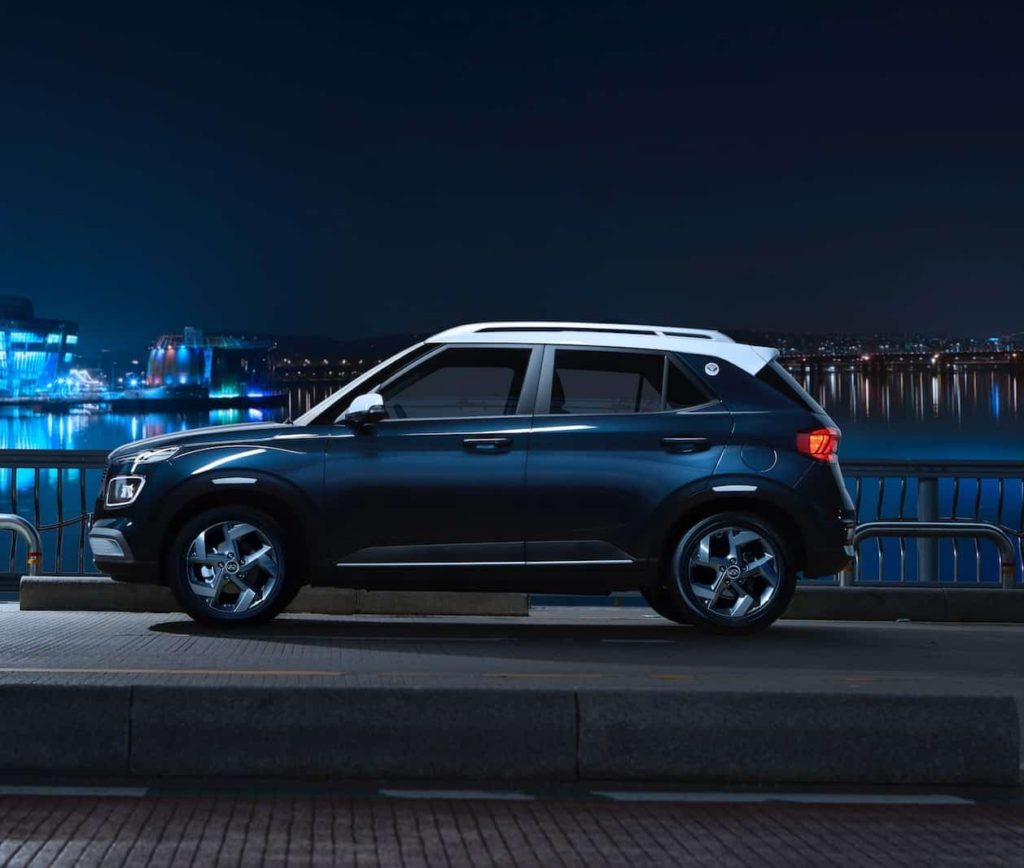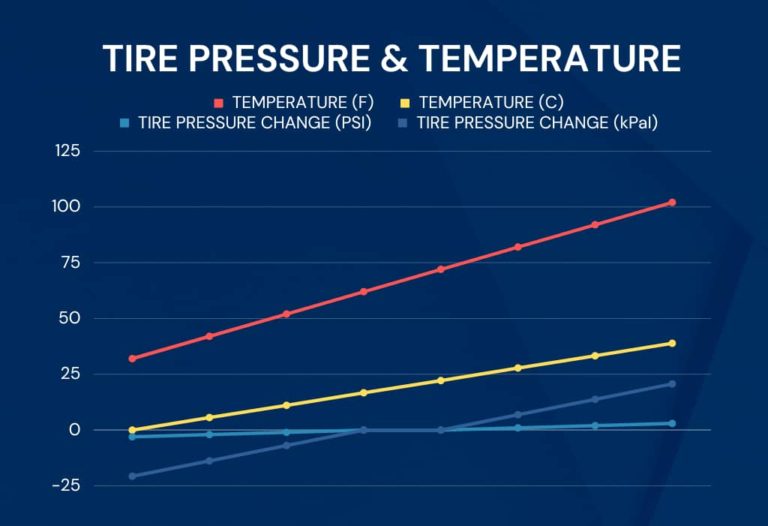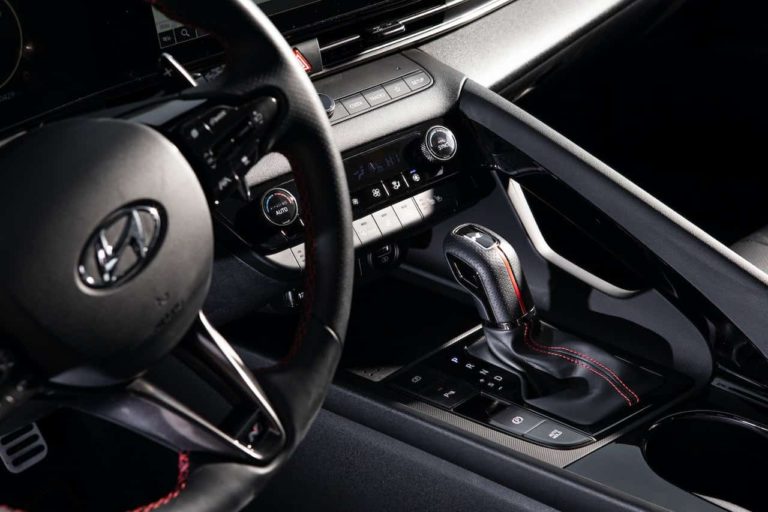Steps to Reset Hyundai Venue Tire Pressure Light
Step 1: Check and Adjust the Tire Pressure
The Hyundai Venue doesn’t have a special button to fix the tire pressure light. To make the light go off, you need to put the EXACT right amount of air in all four tires. You can find the right air amount on a sticker inside the driver’s side door, look at the chart below, or use the Mode button on your steering wheel to check your tire pressure screen. Only adjust your tire pressure when the tires are cool to get accurate readings, which means before they’ve gotten hot from driving.
2023 Hyundai Venue Tire Pressure
Match your tire size to the chart below:
Tire Size | FRONT PSI | REAR PSI |
185/65R15 | 36 | 36 |
205/55R17 | 33 | 33 |
SPARE TIRE | 60 | 60 |
Step 2: Drive your Hyundai Venue
After you put the right amount of air in your tires, go for a short drive in your Venue. Drive for a little while, going faster than 20 mph. You might see a message that says “drive to display” on your LCD screen. Keep driving, and the tire pressure light should go away. If it doesn’t turn off right away, just drive a little longer.
Step 3: Re-check Your Tire Pressure
If the tire pressure light is still on after doing steps 1 and 2, check your tire pressure again to make sure it’s at the same pressure you set it to. If it’s not, there could be some type of pressure leak. If the tire light turns off after you put air in the tires but then comes back on later, you definitely have a leaky tire. If the tire pressure light blinks or flashes before staying on, it means that something is wrong with the tire pressure system. Keep reading to learn more.
Hyundai Venue TPMS Malfunction Indicator
The Hyundai Venue has a tire pressure malfunction indicator that lets you know if something is wrong with the system itself. It uses the same yellow exclamation point light as the tire pressure warning system. If there’s an issue with the TPMS, the yellow light will blink for about 60 seconds before staying on. This will keep happening every time you start your car until the problem is fixed.
It’s important to know that when the malfunction light is on, the TPMS won’t work right. This means the system that checks your tire pressure won’t work until the issue is fixed. Basically all you need to understand is that if the tire light is blinking, it means there’s a problem with the TPMS itself, like a broken sensor in one of your tires, not a problem with the actual air pressure. To figure out which tire sensor is causing the problem, you need a special tool called a TPMS diagnostic tool, like the Autel TPMS tool. (I’ve used Autel TPMS tools for a few years and really like them.)
Reset Your Tire Pressure Light After:
You’ve set the tire pressure to the right amounts
Rotating or replacing tires
Fixing or replacing a TPMS sensor
You replace wheels or rims
Changing wheel/rim or tire sizes. (we don’t recommend doing this)
The car’s battery is disconnected, changed, or jumped
The TPMS warning light comes on
Changes in weather that might affect tire pressure because of temperature changes
How the Hyundai Venue TPMS Works
There are two main types of tire pressure monitoring systems: direct TPMS and indirect TPMS. The Hyundai Venue uses a direct TPMS, which is considered more accurate and reliable. In a direct TPMS, each tire has a small battery-powered sensor inside, known as the tire pressure sensor. These sensors are integrated with the valve stem and they constantly measure the tire’s air pressure and temperature. These sensors transmit the tire pressure information via radio frequency signals to the vehicle’s Engine Control Module (ECM) or a dedicated TPMS receiver module.
The Hyundai Venue’s TPMS not only alerts you when the tire pressure is too low, but it can also provide you with real-time tire pressure readings through the car’s infotainment system or instrument cluster display. You can access this information by using the Mode button on your steering wheel and navigating to the tire pressure display. It’s important to note that the TPMS sensors are battery-powered, and their batteries can last anywhere from 5 to 10 years. Once the batteries are depleted, you’ll need to replace the sensors themselves. This is why the malfunction indicator comes on as we explained above. A professional mechanic or tire shop can help you with this process. As we mentioned above, the TPMS needs to be recalibrated in certain situations, like when you change your tires or wheels, adjust tire pressure, or replace a sensor. This process ensures that the pressure sensors are giving you accurate readings.
What Causes the TPMS Light to Turn On?
The Hyundai Venue TPMS light can come on for various reasons, signaling potential issues that need to be addressed. Here’s a comprehensive list of causes:
Low Tire Pressure: The TPMS light usually comes on when one or more tires don’t have enough air. This can be because of a small leak, a hole, or air escaping naturally over time.
Sensor Problems: If there’s an issue with the TPMS, the warning light will blink for a minute and then stay on. This could happen if a sensor is broken, the sensor’s battery is running out, or there’s an issue with the sensor talking to the car’s computer.
Seasonal Changes: Changes in weather will affect tire pressure. Cold weather makes tire pressure go down, while hot weather makes it go up. The TPMS light will turn on when these big changes happen. (Read more below)
Tire Rotation or New Tires: The TPMS light might turn on after rotating tires or getting new ones if the system thinks the tires are in the wrong position or if the tires need more air.
New Wheels or Different Tire Sizes: If you get new wheels or change tire sizes, the TPMS light might turn on if the system isn’t adjusted for the changes. This will happen if you change a wheel and don’t move the sensors from the old one to the new one.
Battery Issues: The TPMS light could turn on if the car’s battery is disconnected, changed, or jumped.
Sensor Damage: If a TPMS sensor is damaged from impact, rust, or not being installed right, the TPMS light will come on and stay on. Sometimes, the rubber gasket between the valve and sensor goes bad and causes a leak. You can replace this rubber part without getting a new sensor using a sensor kit.
How the Weather Affects your Tire Pressure
The graph above shows how air temperature affects tire pressure. What it shows is that when it gets colder outside, tire pressure tends to decrease, and when it gets warmer, tire pressure goes up. At 62°F tire pressure doesn’t change. So, for every 10-degree drop in air temperature, your tire pressure will go down by about 1 PSI.
What are the Benefits of the TPMS in the Hyundai Venue?
Improved Safety: The Hyundai Venue TPMS helps keep you safe by alerting you when your tire pressure is too low. Properly inflated tires provide better traction and can prevent accidents caused by poor handling or sudden tire blowouts.
Better Fuel Efficiency: When your tires are correctly inflated, your car uses fuel more efficiently. The TPMS helps you maintain the right tire pressure, which can save you money on gas.
Longer Tire Life: Tires that are properly inflated last longer because they wear more evenly. The sensors make it easier to keep your tires at the right pressure, so they don’t need to be replaced as often.
Enhanced Performance: Tires with the right amount of air provide better handling and a smoother ride. This helps you maintain optimal tire pressure, giving you a better driving experience.
Environmental Benefits: Properly inflated tires reduce your car’s fuel consumption, which means fewer emissions and a smaller carbon footprint. This helps you keep your tires at the right pressure, making your car more eco-friendly.
Real-Time Monitoring: The Hyundai Venue TPMS provides real-time information about your tire pressure, allowing you to address any issues immediately and avoid potential problems.
Easy Maintenance: The TPMS makes it easy to know when it’s time to check or adjust your tire pressure. This helps you keep your tires in good shape your Venue performing at its best.
Peace of Mind: Knowing that your TPMS is monitoring your tire pressure can give you confidence while driving, knowing that you’ll be alerted to any issues before they become serious problems.
Conclusion
Turning off the tire pressure warning light on a 2023 Hyundai Venue is a simple task that can be done easily. By following the instructions in this article, you can make sure your tire pressure monitoring system works accurately, and your Hyundai Venue performs at its best.



